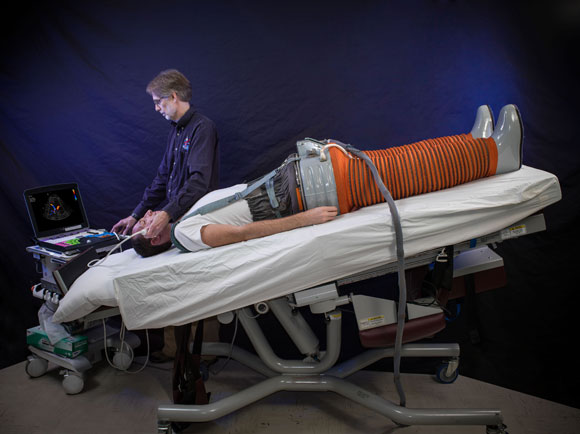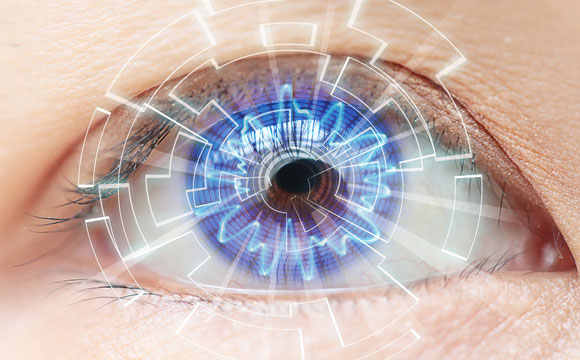 NASA and the Russian Space Agency (Roscosmos) are studying the effects of how fluids shift to the upper body in space and how this adaptation to space flight affects changes in vision. This research will help prepare for a human journey to Mars. The Fluid Shift investigation is part of the groundbreaking research taking place during the One-Year Mission, in partnership between NASA’s Human Research Program and Roscosmos to tackle the complex, unanswered questions of how space flight changes the human body. “The Fluid Shifts investigation is very complex because it’s really a combination of three independent research studies with similar goals but different specific aims,” said Michael Stenger, Ph.D. co-principal investigator for NASA’s Fluid Shifts investigation. “We brought together investigators from NASA, Henry Ford Medical Center, University of California, San Diego and Wyle Science, Technology and Engineering Group. Additionally, we are working jointly with Roscosmos on the International Space Station to conduct the investigation and are using more crewmembers and crew time on this investigation than ever before.”
NASA and the Russian Space Agency (Roscosmos) are studying the effects of how fluids shift to the upper body in space and how this adaptation to space flight affects changes in vision. This research will help prepare for a human journey to Mars. The Fluid Shift investigation is part of the groundbreaking research taking place during the One-Year Mission, in partnership between NASA’s Human Research Program and Roscosmos to tackle the complex, unanswered questions of how space flight changes the human body. “The Fluid Shifts investigation is very complex because it’s really a combination of three independent research studies with similar goals but different specific aims,” said Michael Stenger, Ph.D. co-principal investigator for NASA’s Fluid Shifts investigation. “We brought together investigators from NASA, Henry Ford Medical Center, University of California, San Diego and Wyle Science, Technology and Engineering Group. Additionally, we are working jointly with Roscosmos on the International Space Station to conduct the investigation and are using more crewmembers and crew time on this investigation than ever before.”












 A team of scientists has identified a chemical that could potentially be used in eye drops to reverse cataracts. Identified as a “priority eye disease” by the World Health Organization, cataracts — caused when the lenses of the eyes lose their transparency — affect more than 20 million people worldwide. Although cataracts can be successfully removed with surgery, this approach is expensive, and most individuals blinded by severe cataracts in developing countries go untreated. Reported November 5 in Science, the newly identified compound is the first that is soluble enough to potentially form the basis of a practical eye-drop medication
A team of scientists has identified a chemical that could potentially be used in eye drops to reverse cataracts. Identified as a “priority eye disease” by the World Health Organization, cataracts — caused when the lenses of the eyes lose their transparency — affect more than 20 million people worldwide. Although cataracts can be successfully removed with surgery, this approach is expensive, and most individuals blinded by severe cataracts in developing countries go untreated. Reported November 5 in Science, the newly identified compound is the first that is soluble enough to potentially form the basis of a practical eye-drop medication